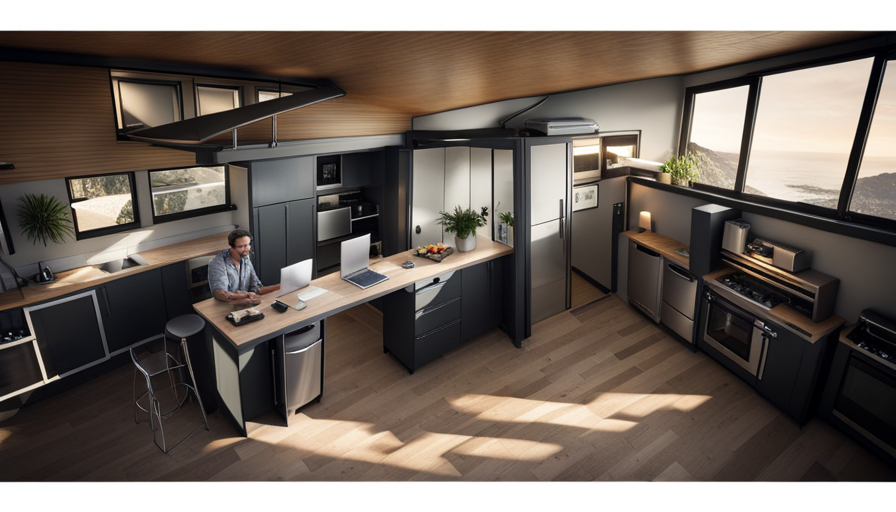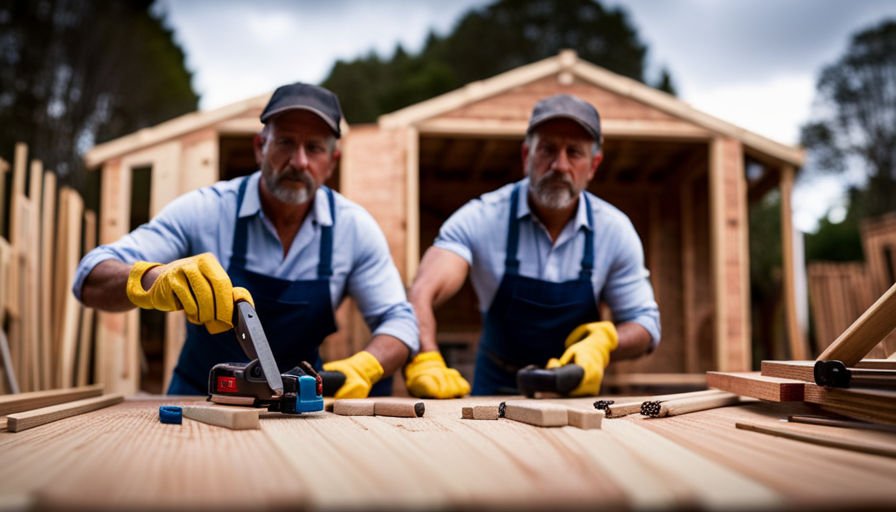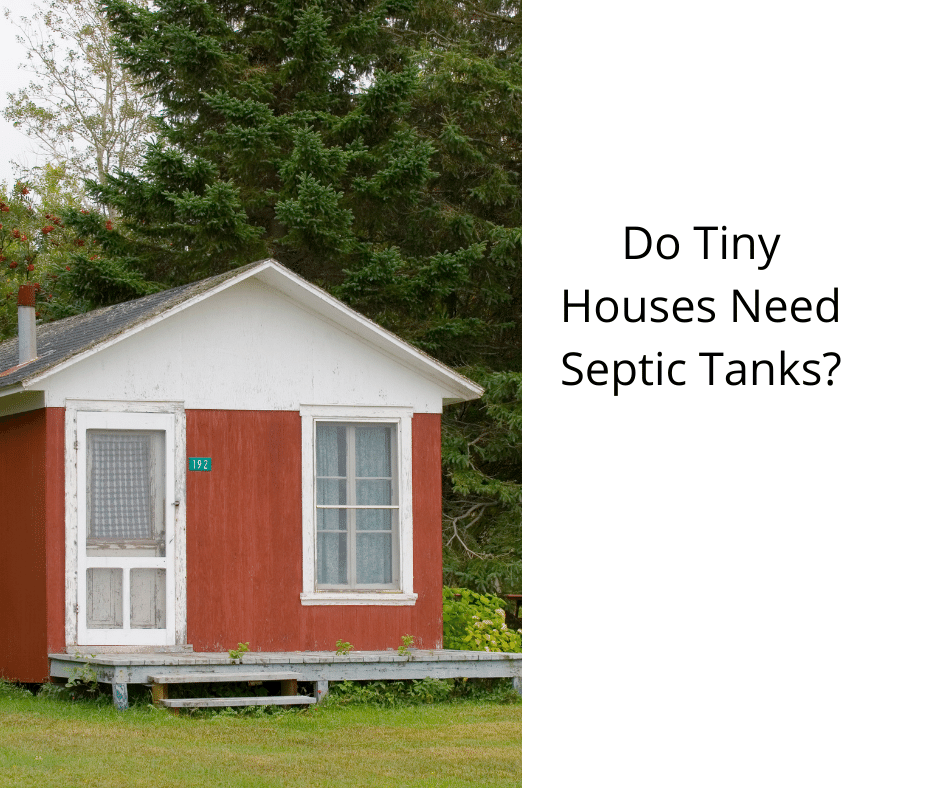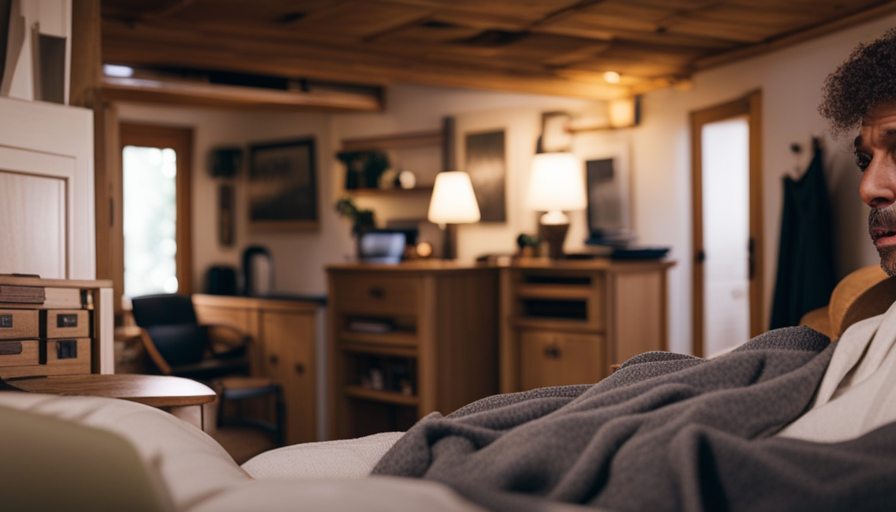Are you ready to delve into the world of tiny houses?
Picture this: you’re embarking on a journey towards a simpler, more sustainable lifestyle, and you’re about to build your very own tiny house.
But wait, there’s one crucial element you can’t overlook – tanks. Just like the heart and soul of a living organism, tanks are the lifeblood of a tiny house. They provide essential resources for survival and comfort, such as water, propane for cooking and heating, and septic systems for waste management.
But how do you fit these vital tanks into such a small space?
In this article, we’ll explore the importance of tanks in a tiny house, discuss various water storage solutions, delve into the world of propane tanks, and uncover the secrets of waste management. We’ll also reveal tips on maximizing space, ensuring maintenance and safety, and finding reliable suppliers and contractors.
So buckle up, because we’re about to take you on a tank-filled adventure in the world of tiny houses.
Key Takeaways
- Tanks for essential resources like water, propane, and waste management are crucial in a tiny house.
- Utilize alternative energy sources like solar panels or wind turbines to connect tanks in a tiny house.
- Rainwater collection and gray water recycling are efficient water storage solutions for tiny houses.
- Safety measures, proper ventilation, and adherence to regulations are important for installing propane tanks in a tiny house.
Understanding the Importance of Tanks in a Tiny House
Tanks are essential in a tiny house because they provide crucial utilities and services in a compact space. In a tiny house, it’s important to maximize the use of limited resources, and tanks play a vital role in achieving this goal.
One of the primary functions of tanks in a tiny house is water filtration. With limited space, it’s not feasible to have large water filtration systems. However, by incorporating tanks into the design, you can efficiently filter and store water for daily use.
Additionally, tanks can be connected to alternative energy sources such as solar panels or wind turbines. This allows you to harness renewable energy to power pumps and filtration systems, reducing your dependency on traditional energy sources. By utilizing tanks and alternative energy sources, you can create a self-sufficient system that provides clean water without relying on external utilities.
Transitioning into the subsequent section about water storage solutions for tiny houses, it’s important to consider the various options available to maximize water storage capacity while minimizing the space required.
Water Storage Solutions for Tiny Houses
One possible solution for storing water in a small living space is to utilize compact storage options. In a tiny house, it is important to maximize the use of available space while still ensuring a sufficient water supply. Two efficient water storage solutions for tiny houses are rainwater collection and gray water recycling.
Rainwater collection involves capturing and storing rainwater for later use. This can be done by installing a rain barrel or a larger water collection system with a storage tank. By collecting rainwater, you can reduce your reliance on traditional water sources and make your tiny house more sustainable.
Gray water recycling is another option for water storage in a tiny house. Gray water refers to the relatively clean wastewater from sources such as sinks, showers, and washing machines. Instead of letting this water go to waste, it can be collected, treated, and reused for purposes like toilet flushing or irrigation. This not only conserves water but also reduces the burden on sewage systems.
By incorporating rainwater collection and gray water recycling systems into your tiny house, you can effectively store water while minimizing your environmental impact. Transitioning to the next section about propane tanks for cooking and heating, it is important to consider the various options available for achieving a comfortable and functional living space.
Propane Tanks for Cooking and Heating
Using propane for cooking and heating in a small living space provides an efficient and versatile solution. When installing propane tanks in a tiny house, it’s important to consider the size of the tank and its placement to maximize space utilization.
Here are four key considerations for propane tank installation:
-
Tank Size: Choose a propane tank size that suits your needs and the available space in your tiny house. Common sizes range from 20 to 100 pounds, with smaller tanks being more suitable for compact living spaces.
-
Placement: Find a suitable location to install the propane tank, ensuring it’s easily accessible for refilling and maintenance. Outdoor placement is often preferred to minimize the risk of fire hazards and ventilation issues.
-
Safety Measures: Install a propane gas detector and ensure proper ventilation to prevent the buildup of potentially harmful gas. It’s also crucial to have a professional perform the installation to ensure compliance with safety standards.
-
Regulatory Compliance: Familiarize yourself with local regulations and codes regarding propane tank installation. Some areas may require permits or have specific guidelines that need to be followed.
When it comes to managing waste in a tiny house, septic systems provide an effective solution.
Septic Systems for Waste Management
To effectively manage waste in your small living space, consider installing a septic system, which can handle the disposal of wastewater and ensure proper sanitation in your tiny home.
Fun fact: According to a study conducted by the Environmental Protection Agency, septic systems are used by approximately 20% of the U.S. population.
When it comes to septic system installation in a tiny house, there are a few key considerations to keep in mind. First, you’ll need to assess the available space and determine the best location for your septic tank and drainfield. It’s important to ensure that the area meets the necessary setback requirements and is easily accessible for maintenance and pumping.
Next, you’ll need to choose the right type and size of septic tank for your needs. For a small living space, a compact design may be more suitable. Additionally, consider the waste disposal methods you plan to use. If you’re using a composting toilet, for example, you may not need a traditional septic system at all.
In the next section, we’ll explore how to maximize space for tank placement without compromising the functionality and aesthetics of your tiny home.
Maximizing Space for Tank Placement
When it comes to optimizing the layout of your small living space, finding the perfect spot for your septic tank is crucial for both functionality and overall aesthetic appeal. In a tiny house, space is at a premium, so it’s essential to employ space-saving techniques when it comes to tank placement.
One option to consider is an alternative tank design that takes up less space than traditional septic systems. For example, a compact composting toilet can be a great choice for waste management in a tiny house. These toilets use natural processes to break down waste into compost, eliminating the need for a large septic tank. Additionally, there are compact greywater tanks available that can be used to store and treat wastewater from sinks and showers.
To better understand the benefits of alternative tank options, take a look at the following table:
| Tank Type | Size | Advantages |
|---|---|---|
| Composting Toilet | Compact | Space-saving |
| Greywater Tank | Small footprint | Efficient wastewater treatment |
By utilizing these alternative tank options, you can maximize space in your tiny house while still effectively managing waste. In the next section, we will discuss plumbing and electrical considerations to further enhance the functionality of your small living space.
Plumbing and Electrical Considerations
When it comes to plumbing and electrical considerations in your tiny house, there are two key points you need to keep in mind.
First, you’ll need to figure out how to connect your tanks to your plumbing fixtures efficiently. This will ensure that you have a reliable water supply and waste disposal system.
Second, you’ll need to plan the wiring for your propane and electrical systems to ensure they’re safe and efficient.
By considering these key points, you can ensure that your tiny house is equipped with the necessary plumbing and electrical systems to meet your needs.
Connecting tanks to plumbing fixtures
First, you’ll want to ensure a seamless connection between the tanks and your plumbing fixtures in your tiny house. To achieve this, follow these steps:
- Position the tanks close to the fixtures to minimize plumbing runs and reduce the chances of leaks or pressure loss.nn2. Use appropriate connectors, such as flexible hoses or PEX pipes, to link the tanks to the fixtures. This allows for easy installation and maintenance.nn3. Install shut-off valves near the tanks to control the water flow. This enables you to isolate specific fixtures or turn off the water supply when needed.nn4. Consider using a water pump or pressure regulator to maintain consistent water pressure throughout your tiny house.
Now that you have connected your tanks to the plumbing fixtures, let’s move on to the next section about wiring for propane and electrical systems.
Wiring for propane and electrical systems
To ensure a safe and efficient setup, it’s important to properly wire the propane and electrical systems in your tiny house. Statistics show that a well-designed system can significantly reduce the risk of accidents and improve energy efficiency. When it comes to propane tank installation, it’s crucial to follow proper guidelines and regulations to prevent leaks and potential hazards. Make sure to use a licensed professional for the installation and consider factors such as tank size, location, and ventilation. As for the electrical system setup, it’s essential to use the correct wiring and equipment to ensure a reliable and safe power supply. Consider consulting an electrician to determine the appropriate wiring size and to install circuit breakers for added protection. By carefully wiring both the propane and electrical systems, you can enjoy a safe and functional living space in your tiny house. Moving on to the next section about maintenance and monitoring of tanks…
Maintenance and Monitoring of Tanks
Regularly checking and maintaining the tanks inside a tiny house is like tending to a miniature ecosystem, ensuring the smooth flow of water and efficient operation. To keep your tanks in good condition, it’s essential to follow proper maintenance techniques.
Firstly, inspect the tanks regularly for any signs of damage or leaks. This includes checking the valves, pipes, and connections. If you notice any issues, address them promptly to avoid further complications.
Additionally, clean the tanks periodically to remove any sediment or debris that may accumulate over time.
In addition to regular maintenance, it’s crucial to have a tank monitoring system in place. These systems help you keep track of the tank levels and alert you when it’s time to refill. Some monitoring systems even allow you to track your tank levels remotely through a smartphone app. This way, you can ensure you never run out of propane or water unexpectedly.
By implementing these maintenance techniques and utilizing tank monitoring systems, you can ensure the smooth operation of your tanks inside a tiny house. With the proper care and monitoring, you’ll have peace of mind knowing that your tanks are functioning optimally.
Now, let’s delve into the next section where we will discuss the safety precautions for tank installation.
Safety Precautions for Tank Installation
When it comes to installing tanks in your tiny house, it’s important to prioritize safety precautions to ensure a secure and worry-free setup. Tank installation safety should always be your top priority.
Before you begin the installation process, make sure to research and understand the specific safety guidelines and regulations for your area. This will help you avoid any potential hazards and ensure compliance with local codes.
One crucial safety precaution is proper tank ventilation. Tanks should always be installed in well-ventilated areas to prevent the accumulation of harmful gases. Ensure that there’s adequate airflow around the tank by providing vents or openings in the surrounding walls. This will help to maintain a safe and healthy environment within your tiny house.
Additionally, it’s essential to consider the weight distribution of the tanks. Ensure that the weight of the tanks is evenly distributed to prevent any structural damage to your tiny house. Consult with a professional if needed to make sure the tanks are placed in a secure and stable manner.
By following these safety precautions, you can confidently install tanks in your tiny house without compromising the safety of yourself or your home. Once you’ve ensured a safe tank installation, you can move on to finding tank suppliers and contractors who can provide you with the necessary equipment and expertise to successfully complete your project.
Finding Tank Suppliers and Contractors
Once you’ve ensured a safe tank installation, it’s time to find reliable tank suppliers and contractors who can provide the necessary equipment and expertise for your project. Here are three key points to consider when finding tank suppliers and contractors for your tiny house project:
-
Finding Tank Size Options: Start by researching various tank sizes that will fit your tiny house. Consider the water and fuel requirements of your household to determine the appropriate tank size. Tank suppliers can provide you with a range of options suitable for your needs. Keep in mind that larger tanks may require additional space and structural considerations.
-
Cost Considerations for Tank Installation: When choosing a tank supplier or contractor, it’s essential to consider the cost of both the tank and its installation. Request quotes from multiple suppliers to compare prices and services offered. Don’t forget to include any additional costs for permits, inspections, and potential modifications to your tiny house.
-
Research and Reviews: Before finalizing your decision, do thorough research on tank suppliers and contractors. Look for reviews and testimonials from previous customers to assess their reliability and quality of work. Additionally, reach out to other tiny house owners who’ve incorporated tanks to get recommendations and insights.
Finding tank suppliers and contractors who offer a variety of tank size options and competitive prices is crucial for a successful project.
Now, let’s explore the benefits and challenges of incorporating tanks in a tiny house.
Benefits and Challenges of Incorporating Tanks in a Tiny House
Incorporating tanks in a tiny house presents both advantages and obstacles that need to be carefully considered.
The benefits of having tanks in a small space are mainly related to space optimization. By having tanks integrated into the structure of the house, you can save valuable square footage that would otherwise be used for separate storage units. This allows you to make the most out of the limited space available in a tiny house.
However, there are also challenges involved in incorporating tanks. Safety precautions should be a top priority when dealing with tanks, especially if you plan on using them for storing flammable or hazardous materials. Proper ventilation, fireproofing, and secure anchoring are essential to ensure the safety of both the occupants and the house itself.
Another challenge is the maintenance and accessibility of the tanks. Since they are not as easily accessible as traditional storage units, it may require extra effort and planning to regularly inspect and maintain them.
While incorporating tanks in a tiny house can offer benefits in terms of space optimization, it also comes with challenges that need to be addressed. By carefully considering the benefits versus the challenges and taking appropriate safety precautions, you can successfully incorporate tanks into your tiny house design.
Frequently Asked Questions
Are there any alternative options to using tanks for water storage in a tiny house?
When it comes to water storage in a tiny house, alternative options can save space and offer practical solutions. One interesting statistic to consider is that a rainwater harvesting system can collect up to 600 gallons of water from just one inch of rainfall on a 1,000 square foot roof.
This highlights the potential of using rainwater collection as an alternative to tanks, providing a sustainable and space-saving solution for water storage in a tiny house.
How do I determine the appropriate size of tanks needed for my tiny house?
To determine the appropriate size of tanks for your tiny house, you need to consider your water usage needs. Calculate the average daily water consumption for your household, including drinking, cooking, and bathing. Also, take into account any alternative water storage options you may have, such as rainwater harvesting or greywater recycling, as these can reduce the reliance on tanks. Once you have an estimate of your water needs, choose tanks that can hold enough water to meet those demands. Don’t forget to consider the space limitations in your tiny house.
What are the potential risks or hazards associated with using tanks in a tiny house?
When using tanks for water storage in a tiny house, it’s important to be aware of the potential risks and hazards.
One risk is the weight of the tanks, which can put strain on the structure and foundation of the house.
Another hazard is the potential for leaks or spills, which can lead to water damage and mold growth.
Consider alternative options such as smaller water containers or connecting to an external water source to minimize these risks.
Can tanks be installed underground or do they have to be placed inside the living space?
Tanks can be installed underground as a space-saving alternative to placing them inside the living space of a tiny house. This underground installation allows you to maximize the available space in your tiny house while still having access to the necessary tanks for water storage or waste management. By burying the tanks underground, you can create a more efficient and practical living environment without sacrificing valuable square footage inside your tiny house.
Are there any regulations or permits required for installing tanks in a tiny house?
To install tanks in a tiny house, it’s crucial to consider regulations and permits. Did you know that in the US, building codes and regulations vary by state and locality?
When it comes to tanks, you may need permits for plumbing, electrical, or structural modifications. Regulations ensure your safety and compliance with environmental standards.
It’s important to research and adhere to the specific requirements in your area to avoid any legal issues or complications.
Conclusion
Congratulations! You’ve successfully learned how to incorporate tanks into your tiny house. Now you can enjoy the convenience of water storage, cooking with propane, and efficient waste management.
By maximizing space and ensuring regular maintenance, you can make the most of your tank installation. Remember to prioritize safety and find reliable suppliers and contractors.
Embrace the benefits and tackle the challenges of incorporating tanks in your tiny house. Get ready to live a sustainable and self-sufficient lifestyle that’ll amaze your friends and neighbors!
Hi, I’m Emma. I’m the Editor in Chief of Tiny House 43, a blog all about tiny houses. While tree houses are often associated with childhood, they can be the perfect adult retreat. They offer a cozy space to relax and unwind, surrounded by nature. And since they’re typically built on stilts or raised platforms, they offer stunning views that traditional homes simply can’t match. If you’re looking for a unique and romantic getaway, a tree house tiny house might just be the perfect option.















